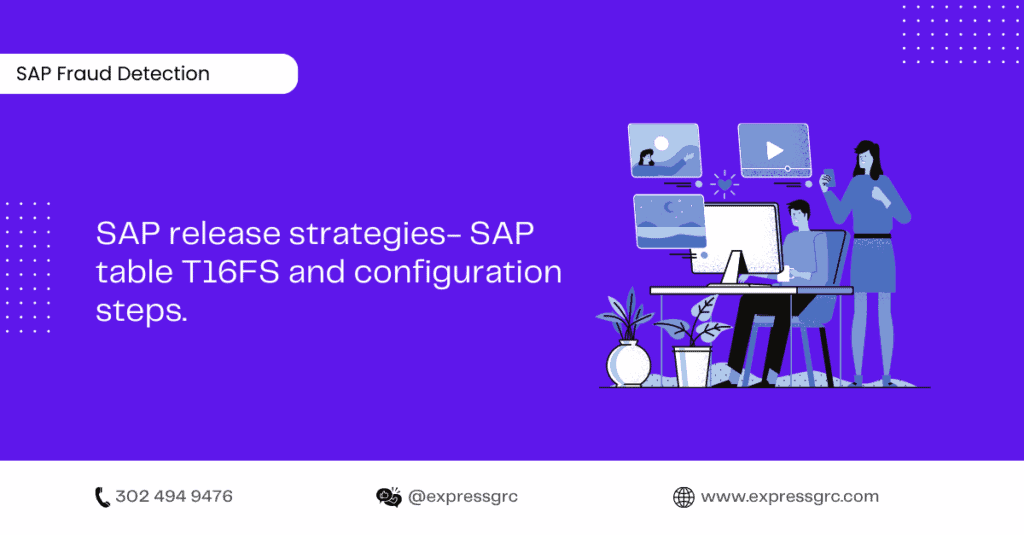In the realm of enterprise resource planning (ERP), SAP (Systems, Applications, and Products) stands as a giant, providing businesses with a comprehensive suite of software solutions to manage various aspects of their operations. With this massive amount of data flowing through SAP systems, ensuring data security is paramount. In this article, we will delve into securing SAP sensitive tables, focusing on SAP release strategies and spotlighting the critical SAP Table T16FS. We’ll also walk through the essential configuration steps to fortify your SAP environment.

Table of Contents
- Introduction
- Brief Overview of SAP Security Concerns
- The Significance of Release Strategies
- Understanding SAP Release Strategies
- Defining Release Strategies in SAP
- Importance of Release Strategies in Data Security
- Exploring SAP Table T16FS
- Introduction to SAP Table T16FS
- Data Stored in T16FS and Its Sensitivity
- Why Securing T16FS is Crucial
- Risks Associated with Unsecured SAP Tables
- T16FS as a Gateway to Sensitive Data
- Configuration Steps for Enhancing Security
- Role-Based Authorization: Restricting Access
- Encryption and Data Masking Techniques
- Regular Monitoring and Auditing
- Implementing Release Strategy for T16FS
- Designing an Effective Release Strategy
- Customizing Workflow for T16FS
- Best Practices for SAP Data Security
- Segregation of Duties (SoD) Enforcement
- Regular Patching and System Updates
- User Training and Awareness
- Importance of User Training
- Promoting a Culture of Cybersecurity
- Conclusion
- Recap of SAP Security Importance
- Empowering Your Business Through Secure SAP Practices
Introduction
SAP systems house an abundance of sensitive data, ranging from financial records to customer information. This valuable data demands meticulous protection against unauthorized access and potential breaches. SAP release strategies play a pivotal role in achieving this protection by controlling the release of documents, ensuring proper authorization, and preventing unauthorized changes.
Understanding SAP Release Strategies
Release strategies within SAP encompass a set of predefined business rules and conditions that determine the approval process for various transactions. These strategies prevent unauthorized release of sensitive documents, mitigating risks associated with data manipulation and unauthorized access.
Exploring SAP Table T16FS
SAP Table T16FS, also known as the Release Strategy: Purchasing Document, holds the key to effective document release control. It defines release strategies for purchase requisitions and purchase orders, ensuring that only authorized individuals can release these documents for further processing.
Why Securing T16FS is Crucial
Unsecured SAP tables, including T16FS, can become gateways for cybercriminals to gain access to critical data. Unauthorized access to purchase documents could lead to financial losses, compromised supplier relationships, and regulatory non-compliance.
Configuration Steps for Enhancing Security
To fortify the security of SAP Table T16FS, consider the following steps:
- Role-Based Authorization: Assign roles based on job responsibilities to restrict access to T16FS. Users should only have access to data essential for their roles.
- Encryption and Data Masking: Employ encryption techniques to safeguard data at rest and in transit. Data masking can further obscure sensitive information from unauthorized eyes.
- Regular Monitoring: Implement monitoring mechanisms to track activities related to T16FS. Auditing logs help detect any unusual behavior or unauthorized access attempts.
Implementing Release Strategy for T16FS
Designing an effective release strategy involves configuring workflow processes, defining approval hierarchies, and setting up rules for automatic release. This ensures that purchase documents go through the appropriate channels before being released.
Best Practices for SAP Data Security
- Segregation of Duties (SoD): Prevent conflicts of interest by ensuring that individuals cannot initiate and approve transactions in a single process.
- Regular Patching: Keep your SAP system up to date with the latest security patches and updates to address known vulnerabilities.
User Training and Awareness
User education is a cornerstone of SAP security. Educate users about the importance of strong passwords, safe browsing practices, and the significance of following security protocols.
Conclusion
Securing SAP sensitive tables, particularly SAP Table T16FS, is a vital undertaking for any organization utilizing SAP systems. By implementing robust release strategies and adhering to meticulous configuration steps, you can protect your valuable data, maintain compliance, and ensure the smooth operation of your business processes.
FAQs
- What is the primary purpose of SAP release strategies? SAP release strategies control the approval process for various transactions, preventing unauthorized release and manipulation of sensitive documents.
- Why is SAP Table T16FS significant? SAP Table T16FS defines release strategies for purchase documents, ensuring authorized release and maintaining data integrity.
- How can I enhance the security of SAP Table T16FS? You can enhance security by implementing role-based authorization, encryption, data masking, and regular monitoring.
- Why is user training crucial for SAP security? User training raises awareness about security best practices, reducing the risk of human error and unauthorized actions.
- What is the role of SoD in SAP data security? Segregation of Duties ensures that no single user can perform conflicting actions, preventing potential fraud and data breaches.
